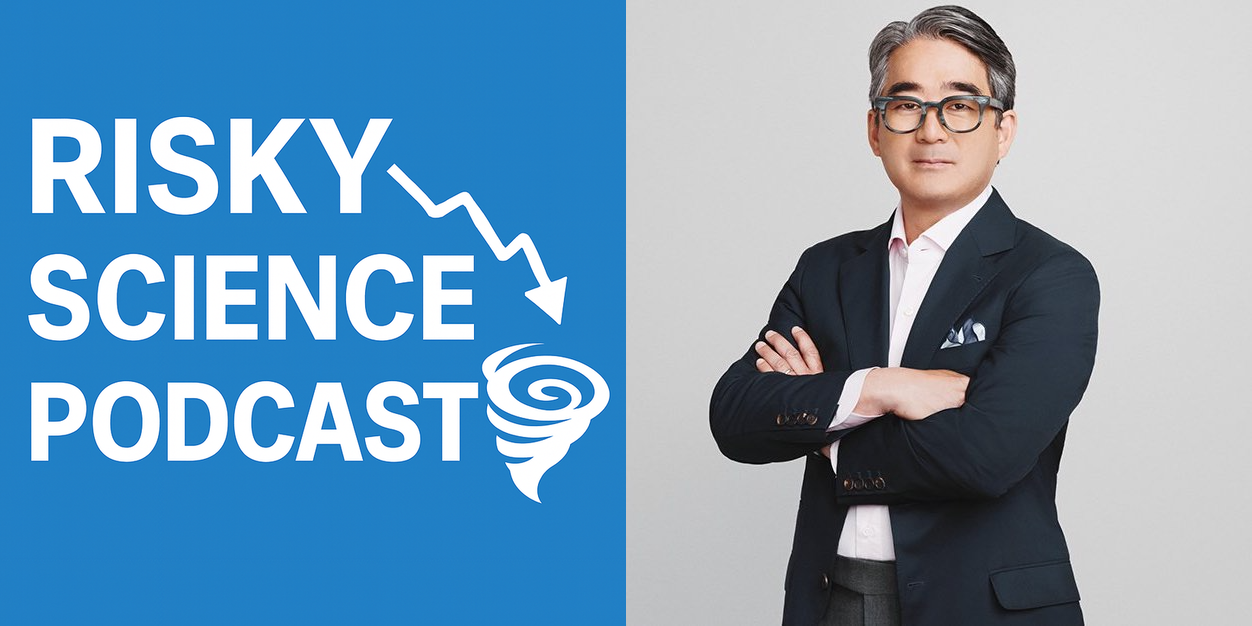Announcing The Risky Science Live podcast with Twelve Securis' Dr. Paul Wilson
- "Hyperclustering" Is Killing US Flood Insurance Program
Researchers suggest "regional" catastrophe bonds for hypercluster-prone areas, and "managed retreat" from other areas of the US. - Senators Target Flood Risk Models, Cat Bond Expansion
Congressional inquiry into NFIP reauthorization explores expanding catastrophe bond usage and opening FEMA's proprietary flood risk models to third-party review.

On the 20th anniversary of Hurricane Katrina, Risky Science Podcast sat down with John Seo, founder of Fermat Capital, to reflect on how the landmark storm reshaped catastrophe bonds, modeling, and investor confidence.
Seo recalled that Katrina was the first large-scale, real-world test for catastrophe bonds, and it provided both validation and lessons that continue to shape today’s insurance-linked securities (ILS) markets.
The cat bond market essentially tripled in the aftermath of Hurricane Katrina… it put cat bonds on the world stage.
Seo added that the event drew in a wave of new investors and demonstrated that modeled loss estimates could match observed experience.
Models and Markets Pass the Test
For Seo and Fermat, the storm was less a surprise than a proving ground.
When Hurricane Katrina happened, it was pretty much as I laid out… they lost exactly what the risk reports said in place. And that’s ultimate validation.
The ability of models to deliver both accurate broad strokes and real-time operational details deepened investor trust.
The validation also set the stage for greater reliance on catastrophe modeling across markets.
Yet, Katrina revealed that externalities like public policy and regulation can significantly alter outcomes. In later events such as Superstorm Sandy, political decisions on deductible application reshaped loss experience, underscoring the need for firms to build an “in-house view” of the models rather than relying solely on vendor outputs.
Beyond Peak Perils
While hurricane and earthquake risk remain central, Seo emphasized that secondary perils – wildfire, tornado, and severe convective storm—are increasingly significant. Advances in data, cloud computing, and even AI are enabling more sophisticated modeling of these perils. Seo highlighted that new tornado/hail models now show average annual losses exceeding those of hurricanes.
Right now, we have a large, vibrant, growing, institutionalized market—you can’t have that without models.
Katrina catalyzed the growth of catastrophe modeling startups and sustained venture funding for new approaches, paving the way for today’s cyber catastrophe models and bonds.
Looking Forward
The conversation revealed a through line from Katrina to emerging risks: confidence in models, tempered by critical in-house expertise, can unlock investor participation in new asset classes. Seo argued that Katrina’s true legacy is the constructive energy it injected into both modeling and markets.
Even the weaknesses as revealed created a positive constructive energy in the market… it had all the elements of the big one without actually being the big one.
For catastrophe modelers and financial professionals, Katrina remains a benchmark event—proof that models can withstand real-world testing and that markets can adapt, evolve, and expand from their lessons.
🎙️ Get the full episode of the podcast on your favorite player here
Timestamped episode chapters
00:00 – Introduction
Setting the Stage: Katrina’s Lasting Impact on Catastrophe Models and Bonds
02:00 – Katrina as a Market Catalyst
How the Cat Bond Market Tripled After 2005
06:30 – Investor Confidence Under Fire
Validating Models and Surviving the “Hollywood Scenario”
11:00 – The First True Test of Catastrophe Models
Katrina vs. Traditional Actuarial Methods
16:00 – Politics, Policy, and Deductibles
Why Modeling Public Behavior Matters as Much as Wind Speed
22:30 – The In-House View of Models
Balancing Skepticism, Overconfidence, and Black-Box Risks
28:00 – Beyond Peak Perils
The Rise of Wildfire, Tornado, and Severe Convective Storm Models
34:00 – AI and Model Acceleration
How Technology is Reshaping Model Development
38:00 – A Biophysics Approach to Complex Systems
John Seo on Blending Human Behavior with Mathematical Rigor
44:00 – Katrina’s Legacy in Today’s Markets
From Venture-Backed Modeling Startups to Cyber Catastrophe Bonds
49:00 – Closing Reflections
Why Katrina Still Shapes Investor Confidence and Risk Transfer Today





